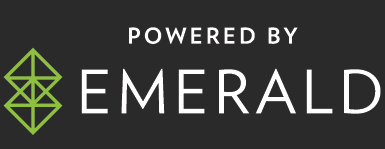By David George, CEO, Pixability
Depending on who you’ve talked to this year in the advertising industry, Generative AI (or GenAi/GAI), can be seen as a revolutionary force changing marketing for the better, or an uncontrollable locomotive that has very concerning ramifications. When it comes to the effect GenAI is having specifically on video advertising right now, the answer is “it’s both things.” The good news is, as we turn the corner into 2025, if advertisers play their cards right, the “good” parts of GenAi can far outweigh the “bad,” but they must first know which is which so they can navigate between them.
Let’s consider some examples of each.
The “Bad”– MFA Content
This year, GenAI has unquestionably led to the easy creation of made-for-advertising channels that may include videos with deep fakes or misinformation. Recently an ecommerce brand reported seeing over one third of its impressions on made-for-advertising (MFA) YouTube channels that were likely mostly AI-generated content. Google is taking actions to address this, as is ChatGPT, but for now it’s a problematic outcome of GenAI and one that, for now, is best solved with a combination of inclusion and exclusion technology.
The Good & Bad – AI generated Creative
While advertisers may not want their ads running on GenAI content, they have increasingly been benefitting from the ability to create their ads using GenAI. An ad that may have taken days to create–from writing and producing to editing the spot–can now be created in a matter of hours using GenAi, resulting in a much more cost effective process. But AI-created ads also have the potential to more easily miss their mark if they lack authenticity or even appear soulless. Coke recently found this out when they produced a remake of their “Holidays are Coming” commercial using AI-generated people, animals and trucks driving into an AI-generated town. Using “fake” people in a commercial that contains the phrase “it’s always the real thing,” didn’t sit well and resulted in social backlash. For now, GenAI creative can be a “good” thing but it requires a human touch and judgment to ensure it doesn’t veer into the bad category too.
The All Good: Video Curation
The most exciting use case for GenAI so far this year is its ability to process mountains of video data to create a new, and previously impossible, way to curate inventory. In the TV advertising heyday, an advertiser might pick a dozen TV shows that reach their audience to make up a campaign. Right now, specifically on YouTube, we see 500 hours of content uploaded a minute–or the equivalent of a full “Netflix” amount of content uploaded every hour. How can an advertiser possibly make sense of all of this to “pick” the right shows, especially considering an average campaign can run on over 150,000 YouTube channels?
GenAI started solving for this on YouTube this year, using a combination of publicly available data (including channel size and key word meta data) and, increasingly, appended third party data ranging from video topic, popularity and creator information to audience engagement, suitability levels and even past ad cost and performance. Instead of a human picking ~150,000 channels for a YouTube campaign, a human can use GenAI to access this data to identify the 20,000 most relevant channels and videos for an audience. This type of GenAI application is similar to Salesforce’s Customer 360 Truth Profile which can take 15 billion customer/prospect records and create 550 targeting segments out of them. In the same way, we can use GenAI to create segments of channels on YouTube, and eventually possibly across all video content, greatly improving the advertising experience for both advertisers and viewers.
What Next?
Going forward into 2025, advertisers won’t care whether a piece of content appears on YouTube, Netflix, Hulu or Prime, as long as they can access and take advantage of a video’s data. As this year proved, now we can do this on YouTube, and hopefully someday soon we’ll have a single unified way to access that same data for all streaming platforms in one, privacy friendly place. It may be a lofty dream, especially when we’re talking about walled gardens, but it’s one that’s not out of reach with GenAI.
And so, while some not so great applications of GenAI have emerged over the last twelve months, we shouldn’t let those detract from fundamentally changing how we aspire to reach audiences in the future. In the meantime, GenAI as a curation tool is not only “good” and “possible” but it is here.




